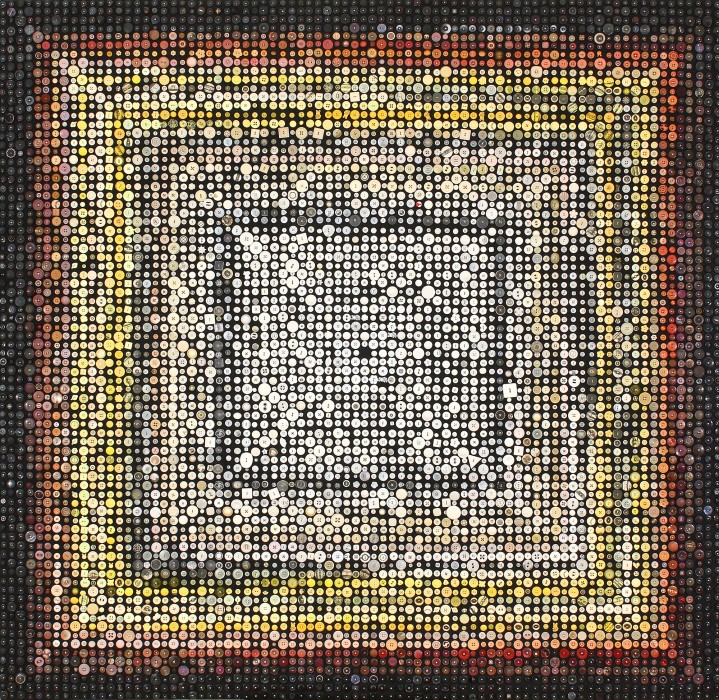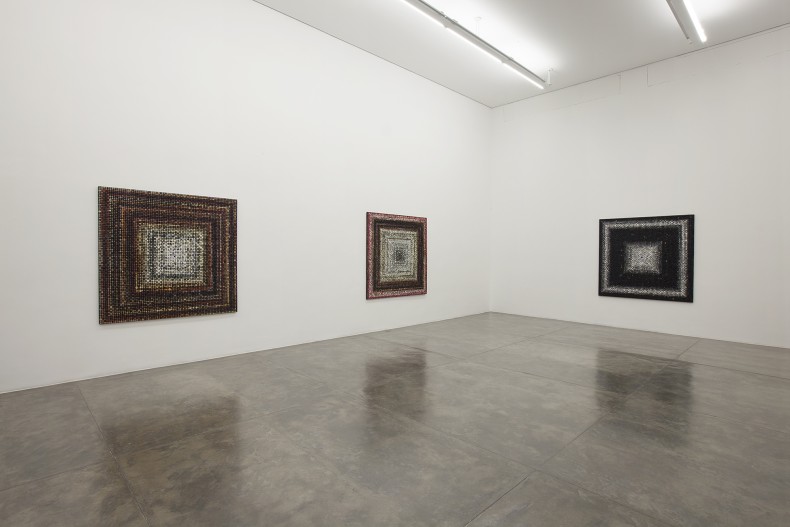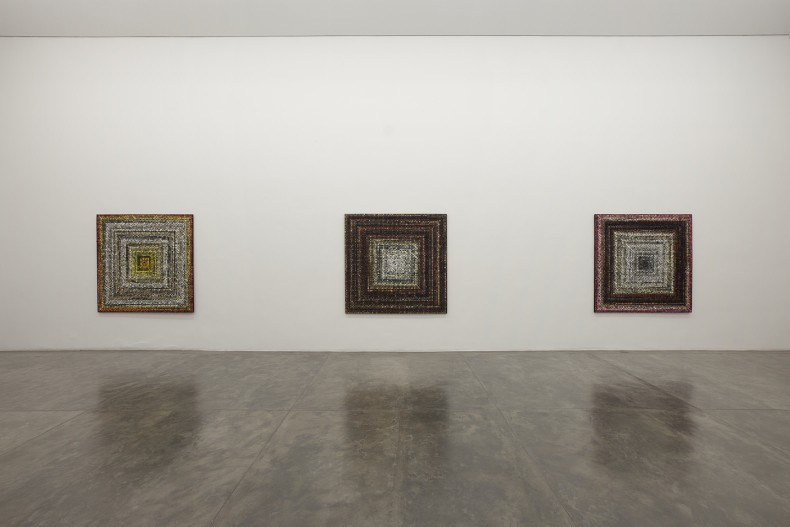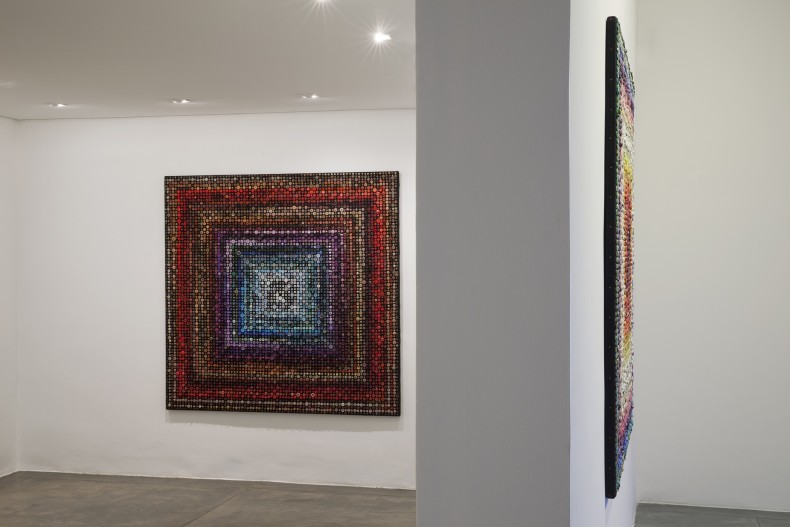Countless possibilities of numerical combinations using commonplace materials will feature once again at Galeria Nara Roesler starting on June 14, Saturday, with the opening of the solo show by the Pernambuco state-born artist José Patrício. The show will include approximately 12 works from series such as Afinidades Cromáticas (Chromatic Affinities), made in 2012-2013 using elements such as buttons and puzzles.
Regarding the Ars Combinatoria series, in which Patrício crafts intricate geometrical mosaics combining domino pieces, the critic Paulo Sérgio Duarte commented in 2002: “The field of combinatory mathematics is incorporated as a starting point, and we are faced with the combination in the series, infinite in their possibilities. The problem is no longer the reproduction of the same; this time, it is about producing infinite others from the same.”
This statement sheds light on the premise that underpins installations by the artist, whose use of color and shape also likens his works to painting. The orderliness with which commonplace elements are arranged is a direct allusion to the imagery of concretism. Corroborating this idea, Paulo Sérgio Duarte includes Patrício in the lineage of the “contemporary artist who does not despise history, who sees the artistic phenomenon as a specific cultural field within a tradition,” and therefore “works under pressure from strong paradigms.”
While concretism sings praise of reason and science, José Patrício adds subversive data to this universe. The trivial artifacts with which he creates patterns which are byzantine mosaics, at times, and literal constructivist pieces, at others, may fool unsuspecting eyes at first. For its formal potency, the whole imposes itself beforehand, and then gives way to an examination of its small components.
This is the case, for instance, with the Afinidades Cromáticas series. The concentric squares are composed of myriad clothing buttons in different shapes and colors, introducing a human element from an unsuspected perspective. Instead of the perceivable brushstroke in a visceral painting, the use of prosaic elements breaks the initial detachment and gives way to a feeling of familiarity.
The multiplication of these artifacts into patterns, some of which even form labyrinths, is not random. It is the outcome of calculations, elaboration, the quest for the configuration that allows for the best effect, that is, human ingeniousness. The double perspective, macro- and micro-visual, outlines a mathematics whose structural cohesion causes the playful dimension of daily life to surface.









